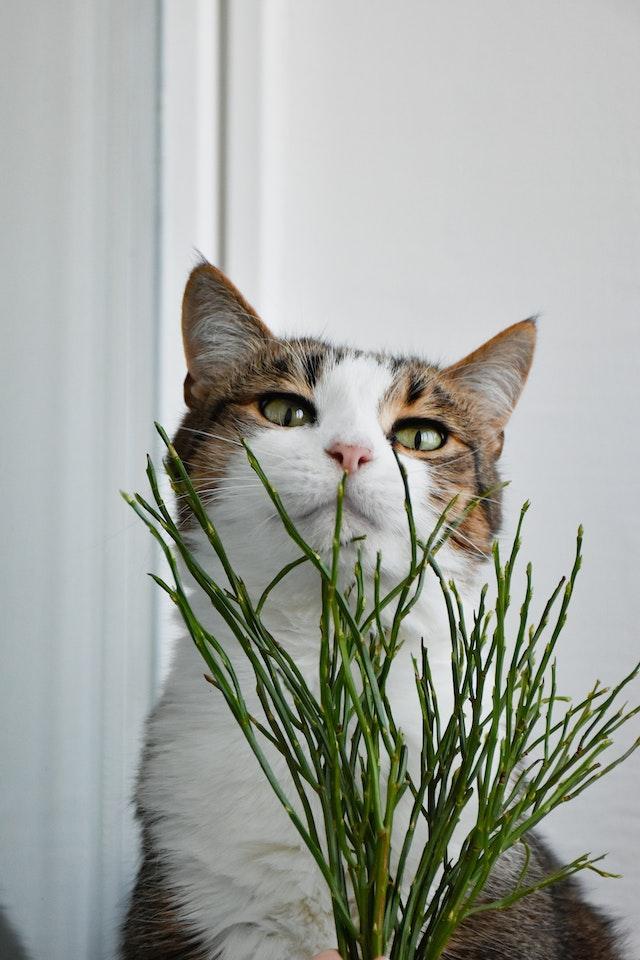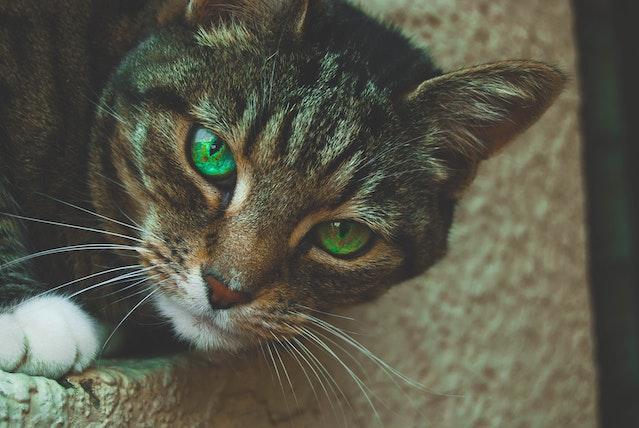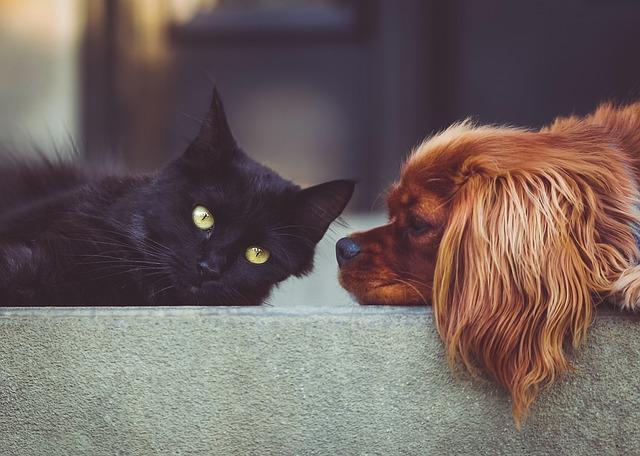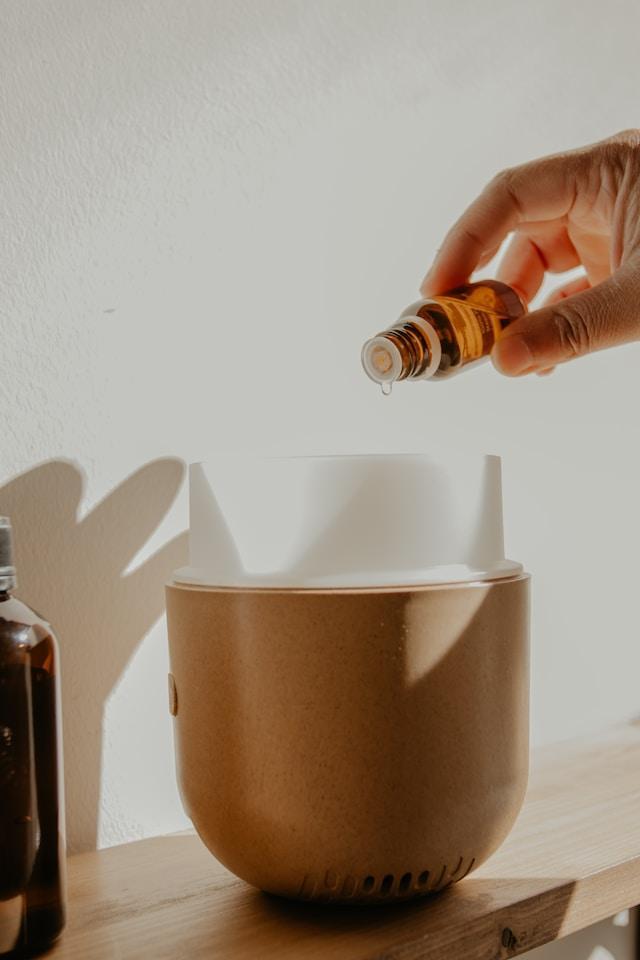
11 minute read
Chapter 6: Integrating Essential Oils into Your Cat's Lifestyle
Welcome to Chapter 6, where we'll explore practical tips for incorporating essential oils into your cat's lifestyle. By following these guidelines, you can ensure a safe and enriching experience for your feline companion. Let's delve into the world of essential oils and discover how to seamlessly integrate them into your cat's care routine!
6.1 Choosing High-Quality
Advertisement
Essential Oils Selecting high-quality essential oils is paramount to ensure their effectiveness and safety Look for oils that are 100% pure, therapeutic grade, and sourced from reputable suppliers. Organic options are preferable, as they are free from pesticides and other potentially harmful substances. Checking for third-party testing and certifications can also provide assurance of the oil's quality.
6.2 Tips for Proper Storage and Shelf Life
To maintain the potency and quality of your essential oils, proper storage is crucial. Keep them in dark glass bottles, tightly sealed, and store them in a cool, dry place away from direct sunlight. Avoid exposing the oils to extreme temperatures, as they can deteriorate over time. Following these storage guidelines will help prolong the shelf life and ensure the oils retain their therapeutic properties.
6.3 Incorporating Essential Oils into Daily Routines
Integrating essential oils into your cat's daily routines can be a wonderful way to enhance their well-being. For example, you can add a few drops of calming essential oils, such as lavender or chamomile, to their bedding or create a relaxing atmosphere during their nap time. You can also use essential oils during grooming sessions by adding a diluted blend to a grooming spray or gently massaging it onto their fur Tailor the use of essential oils to your cat's preferences and monitor their response to ensure a positive experience.
6.4 Supplementing Veterinary Care with Essential Oils
While essential oils can provide support, they should not replace professional veterinary care. Essential oils can complement veterinary treatments, but it's important to consult with your veterinarian for guidance on specific health concerns. They can offer insights on appropriate oils, dilutions, and application methods that align with your cat's individual needs. Working in partnership with your veterinarian ensures a holistic and well-rounded approach to your cat's care.
6.5 Consulting Professionals for Guidance
When in doubt or if you have specific concerns regarding essential oil usage with your cat, don't hesitate to seek guidance from professionals. Certified aromatherapists or veterinarians with knowledge of essential oil usage can provide personalized advice based on your cat's health, temperament, and specific requirements. Their expertise can help you navigate the world of essential oils with confidence and ensure the well-being of your feline friend.
Chapter 7: Essential Oils That Are Toxic to Cats
Welcome to this important chapter where we'll discuss essential oils that are toxic to our beloved feline friends. While essential oils have numerous benefits, it's crucial to be aware of oils that can pose a risk to your cat's health. By understanding these toxic oils, we can take the necessary precautions to keep our furry companions safe. Let's explore this topic together!
Tea Tree Oil: Tea tree oil, derived from the Melaleuca alternifolia plant, is toxic to cats. It contains compounds called terpenes, specifically 1,8-cineole and terpinen-4-ol, which can be harmful to their delicate systems. Ingestion or even topical exposure to tea tree oil can lead to symptoms such as weakness, tremors, difficulty walking, vomiting, and even liver damage. It's essential to keep products containing tea tree oil, such as cleaning solutions or personal care items, away from cats.
Pennyroyal Oil: Pennyroyal oil, extracted from the Mentha pulegium plant, is highly toxic to cats. It contains a compound called pulegone, which can cause liver failure and other serious health issues. Even small amounts of pennyroyal oil can be detrimental to a cat's well-being. It's crucial to avoid any products or formulations containing pennyroyal oil, as they can be life-threatening to cats. Cinnamon Oil: Cinnamon oil, derived from the Cinnamomum verum or Cinnamomum cassia tree bark, contains compounds such as cinnamaldehyde. These compounds can irritate a cat's skin, mucous membranes, and gastrointestinal tract. Ingesting or direct contact with cinnamon oil can cause symptoms like drooling, vomiting, diarrhea, breathing difficulties, and even liver damage. It's important to keep cinnamon oil and cinnamon-based products away from cats.
Clove Oil: Clove oil, obtained from the Syzygium aromaticum plant, is highly toxic to cats. It contains a compound called eugenol, which can cause severe health issues. Ingestion or even contact with clove oil can lead to symptoms such as difficulty breathing, liver damage, gastrointestinal upset, and weakness. It's crucial to keep products containing clove oil, such as dental care solutions or aromatic blends, out of reach of cats.
Citrus Oils: Citrus oils, including lemon, orange, grapefruit, and lime oils, contain compounds called limonene and linalool. These compounds can cause gastrointestinal upset and even central nervous system depression in cats. Ingestion or direct contact with citrus oils can result in symptoms like drooling, vomiting, diarrhea, and changes in behavior. It's important to avoid using citrus oils in any form around cats, including diffusing or applying them topically.
*Important Note: While citrus oils can be problematic for cats, citronella oil, derived from a different plant species, is not classified as citrus oil. Citronella oil should still be used with caution around cats due to their sensitivity to essential oils in general, but it is not specifically associated with the gastrointestinal and central nervous system effects mentioned for citrus oils.
Chapter 8: Essential Oil Recipes for Cat Wellness
Welcome to Chapter 8, where we'll explore a collection of essential oil recipes specifically formulated to support the wellness of our feline companions. These recipes are carefully crafted to address common cat ailments and promote their overall health. Let's dive into the aromatic world of essential oil blends for cats!
Calming Blend for Anxiety Relief
Is your cat experiencing anxiety or stress? Try this calming blend to create a soothing environment:
Ingredients:
● 3 drops of lavender essential oil
● 2 drops of Roman chamomile essential oil
● 1 drop of frankincense essential oil
● 1 tablespoon of carrier oil (such as fractionated coconut oil)
Instructions:
In a small glass bottle, combine the essential oils with the carrier oil.
Gently shake or roll the bottle to mix the oils thoroughly.
Apply a small amount of the blend to your palms and rub them together
Stroke your cat's fur with your hands, allowing them to inhale the calming aroma.
Remember to observe your cat's response and adjust the dilution or frequency of use as needed. This blend can be used during stressful situations or incorporated into your cat's daily routine to promote a sense of calm.
Respiratory Support Blend for Congestion
Relief If your cat is experiencing respiratory congestion, this blend can provide relief and support their respiratory health:
Ingredients:
● 2 drops of eucalyptus essential oil
● 2 drops of cedarwood essential oil
● 1 drop of lemon essential oil
● 1 tablespoon of carrier oil (such as sweet almond oil)
Instructions:
Mix the essential oils and carrier oil in a glass bottle, ensuring they are well blended.
Apply a small amount of the blend to your fingertips.
Gently massage the blend onto your cat's chest or back, focusing on the area near the lungs.
Allow your cat to inhale the aroma as you massage the blend into their fur
This respiratory support blend can help ease congestion and promote healthy breathing. Be mindful of your cat's comfort and discontinue use if any adverse reactions occur.
Skin Soothing Blend for Irritated Skin
If your cat has irritated or itchy skin, this blend can provide relief and support skin health:
Ingredients:
● 2 drops of lavender essential oil
● 2 drops of chamomile essential oil
● 1 drop of helichrysum essential oil
● 1 tablespoon of aloe vera gel
Instructions:
In a small bowl, combine the essential oils with the aloe vera gel. Stir the mixture until the ingredients are well incorporated. Apply a small amount of the blend to the affected area on your cat's skin. Gently massage the blend into the skin, focusing on the irritated areas.
This skin soothing blend can help calm and nourish your cat's skin. Monitor their response and discontinue use if any discomfort or adverse reactions occur
Please note that these recipes are intended for external use on cats. Avoid direct ingestion or applying these blends near the eyes, ears, or sensitive areas. Always dilute essential oils properly and consider your cat's individual sensitivities and preferences.
Chapter 9 - Common Questions and Answers on Using Essential Oils with Cats
Can I use any essential oil on my cat?
Not all essential oils are safe for cats. Some essential oils can be toxic or cause adverse reactions. It's important to choose cat-safe essential oils and consult with a veterinarian experienced in essential oil usage for cats.
How do I know if my cat is sensitive to essential oils?
Cats can have varying sensitivities to essential oils. It's best to start with low dilutions and observe your cat's response. Look for signs of discomfort, excessive grooming, changes in behavior, or respiratory distress. If any negative reactions occur, discontinue use immediately
How should I dilute essential oils for my cat?
Essential oils should always be diluted before use on or around cats. A safe dilution ratio is typically 1-2 drops of essential oil per ounce of carrier oil or another dilution medium. Proper dilution helps minimize the risk of skin irritation or other adverse effects.
Can I use essential oils to help my cat relax?
Yes, some essential oils can have calming properties. Oils like lavender or chamomile, when properly diluted and introduced gradually, may create a soothing environment for your cat. However, every cat is unique, so it's important to monitor their response and adjust accordingly.
Can I use essential oils to treat my cat's medical condition?
Essential oils should not replace professional veterinary care. While essential oils can offer support, it's essential to consult with a veterinarian for guidance on using essential oils for specific medical conditions. They can provide personalized advice based on your cat's health needs.
How should I store essential oils to maintain their potency?
To maintain the potency of essential oils, store them in dark glass bottles, tightly sealed, and in a cool, dry place away from direct sunlight. Extreme temperatures can deteriorate the oils, so it's best to store them in a moderate environment.
Can I diffuse essential oils around my cat?
Yes, you can diffuse essential oils around your cat, but it's important to use a diffuser specifically designed for pets. Choose cat-safe oils and ensure that the aroma is not overwhelming for your cat. Also, provide your cat with the option to move away from the diffuser if they desire.
Are there any essential oils I should never use on my cat?
Yes, there are essential oils that are toxic to cats and should be strictly avoided. Examples include tea tree oil, pennyroyal oil, cinnamon oil, clove oil, and citrus oils. It's crucial to familiarize yourself with the list of toxic essential oils and keep them away from your cat.
Conclusion:
Congratulations on completing this journey through the world of essential oils for cats! I hope this book has provided you with valuable insights, practical tips, and a deeper understanding of how essential oils can enhance your feline friend's well-being. As you incorporate essential oils into your cat's care routine, always remember to prioritize their safety, comfort, and individual needs.
Throughout the chapters, we explored the healing power of essential oils, their potential benefits for common feline ailments, and various techniques for using them safely. From creating a safe environment and managing odors to supporting respiratory health and promoting a shiny coat, essential oils can play a valuable role in your cat's overall wellness.
We also discussed the importance of being mindful of essential oils that are toxic to cats. Tea tree oil, pennyroyal oil, cinnamon oil, clove oil, and citrus oils are just a few examples of oils that should be avoided. By being aware of these risks, we can prevent potential harm and ensure the well-being of our beloved companions.
Remember, essential oils should never replace professional veterinary care. If you have any concerns about your cat's health or if you're considering using essential oils for specific conditions, it's always best to consult with a veterinarian experienced in essential oil usage with animals. Their expertise will guide you in making informed decisions tailored to your cat's unique needs.
As you continue your journey with essential oils and your feline companion, we encourage you to observe and listen to your cat. Each cat is an individual with their own preferences and sensitivities. Pay attention to their reactions, adjust dilutions and applications accordingly, and always prioritize their comfort and well-being.
I hope this book has empowered you to create a harmonious and aromatic environment that enhances your cat's health and happiness. By incorporating essential oils safely and thoughtfully, you can deepen the bond with your feline friend and provide them with holistic support.
Wishing you and your beloved cat many delightful and aromatic moments together May your journey with essential oils be filled with joy, well-being, and countless purrs of contentment!
With warm regards,
Kristina Grant
References:
"Essential Oils and Cats: A Potentially Toxic Combination" by the American Society for the Prevention of Cruelty to Animals (ASPCA) provides detailed information on essential oils toxic to cats. [Link: https://www.aspca.org/news/essential-oils-and-cats-potentially-toxic-combination]
"Essential Oils and Cats: What You Need to Know" by the International Cat Care offers insights into toxic essential oils and their effects on cats. [Link: https://icatcare.org/advice/essential-oils-and-cats-what-you-need-know/]
"Essential Oil Safety for Cats" by the Tisserand Institute provides detailed information on safe essential oil usage with cats. [Link: https://tisserandinstitute.org/safety/essential-oils-and-cats/]
The "Animal Desk Reference" by Melissa Shelton, DVM, offers insights on using essential oils for animals, including cats. [Link: https://www.animaleo.info/animal-desk-reference.html]
Glossary of Essential Oil Terms
Essential Oil: Highly concentrated aromatic compounds derived from plants through various extraction methods. They capture the natural fragrance and therapeutic properties of the plant.
Dilution: The process of combining essential oils with a carrier oil or dilution medium to reduce their concentration before use. This ensures safe and proper application.
Carrier Oil: A neutral, plant-based oil used to dilute essential oils. Common carrier oils include coconut oil, almond oil, and jojoba oil.
Aromatherapy: The practice of using essential oils for their therapeutic benefits, often through inhalation or topical application, to promote physical, mental, and emotional well-being.
Diffuser: A device used to disperse essential oils into the air, creating a fragrant and therapeutic atmosphere.
Terpenes: Organic compounds found in essential oils that contribute to their aroma and potential therapeutic effects.
Distillation: The process of extracting essential oils through steam distillation, which involves passing steam through the plant material to release and collect aromatic compounds.
Topical Application: Apply essential oils diluted in carrier oil directly onto the skin. It allows for localized effects and absorption of the oil's beneficial properties.
Inhalation: The method of breathing in essential oils through diffusion, steam inhalation, or direct inhalation. Inhalation allows the aroma and beneficial compounds to interact with the respiratory system and olfactory receptors.
Patch Test: A small application of diluted essential oil on a small area of the skin to check for any adverse reactions or sensitivity before using it more extensively.
Phenols: A class of chemical compounds found in some essential oils. They can have antiseptic properties but may be irritating or toxic to cats.
Toxicity: The potential harm or adverse effects caused by the ingestion, inhalation, or contact with substances, including certain essential oils, that can be harmful to cats.
Pet-Safe Formulations: Essential oil products are specifically formulated for safe use with pets, considering their unique sensitivities and physiological differences.
Vetiver: An essential oil derived from the roots of the Vetiveria zizanioides plant, known for its calming and grounding properties.
Citronella: An essential oil obtained from the leaves and stems of the Cymbopogon genus of plants. It is commonly used as an insect repellent.
Limonene: A naturally occurring compound found in citrus essential oils, known for its uplifting aroma and potential benefits.





